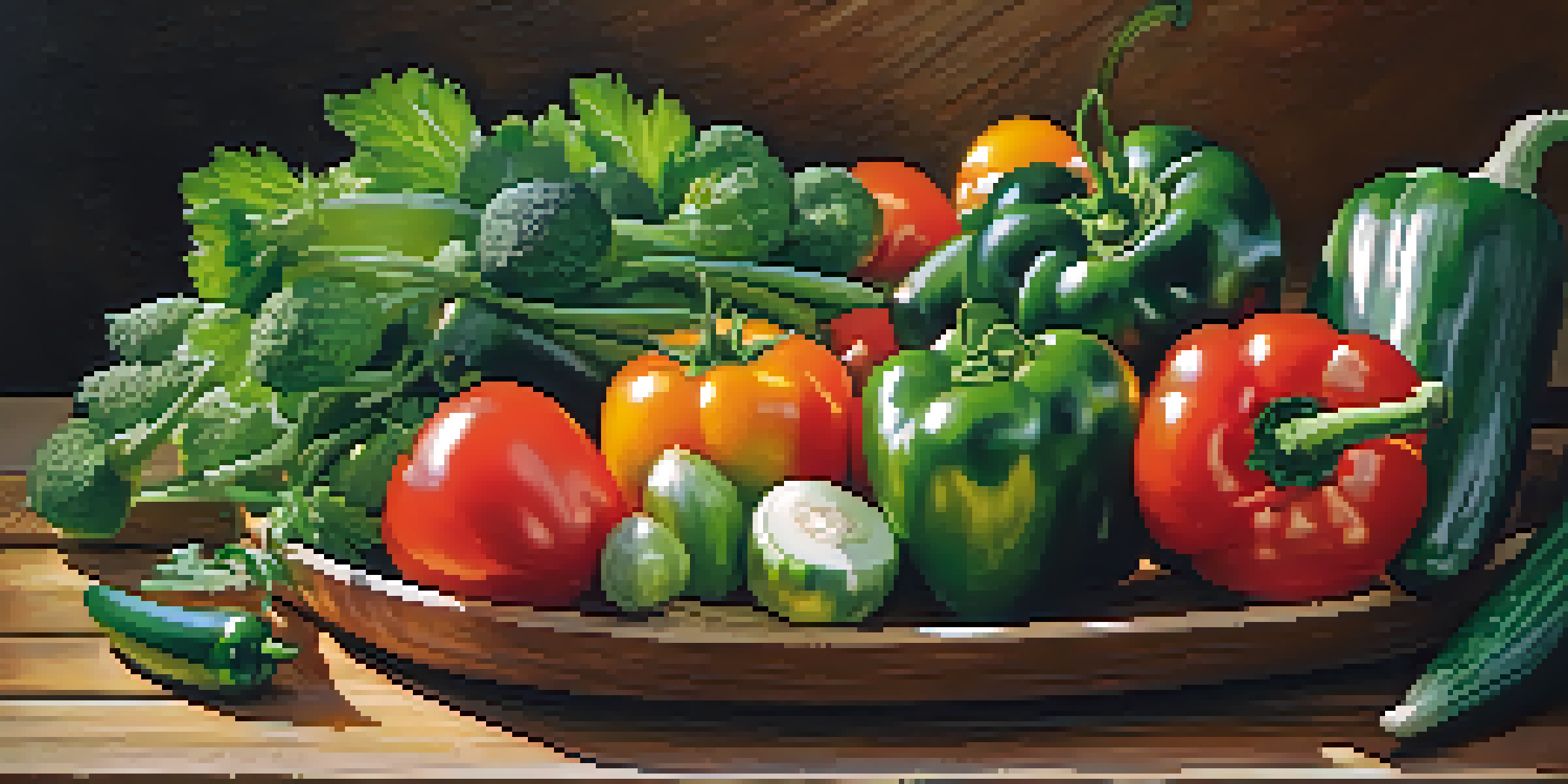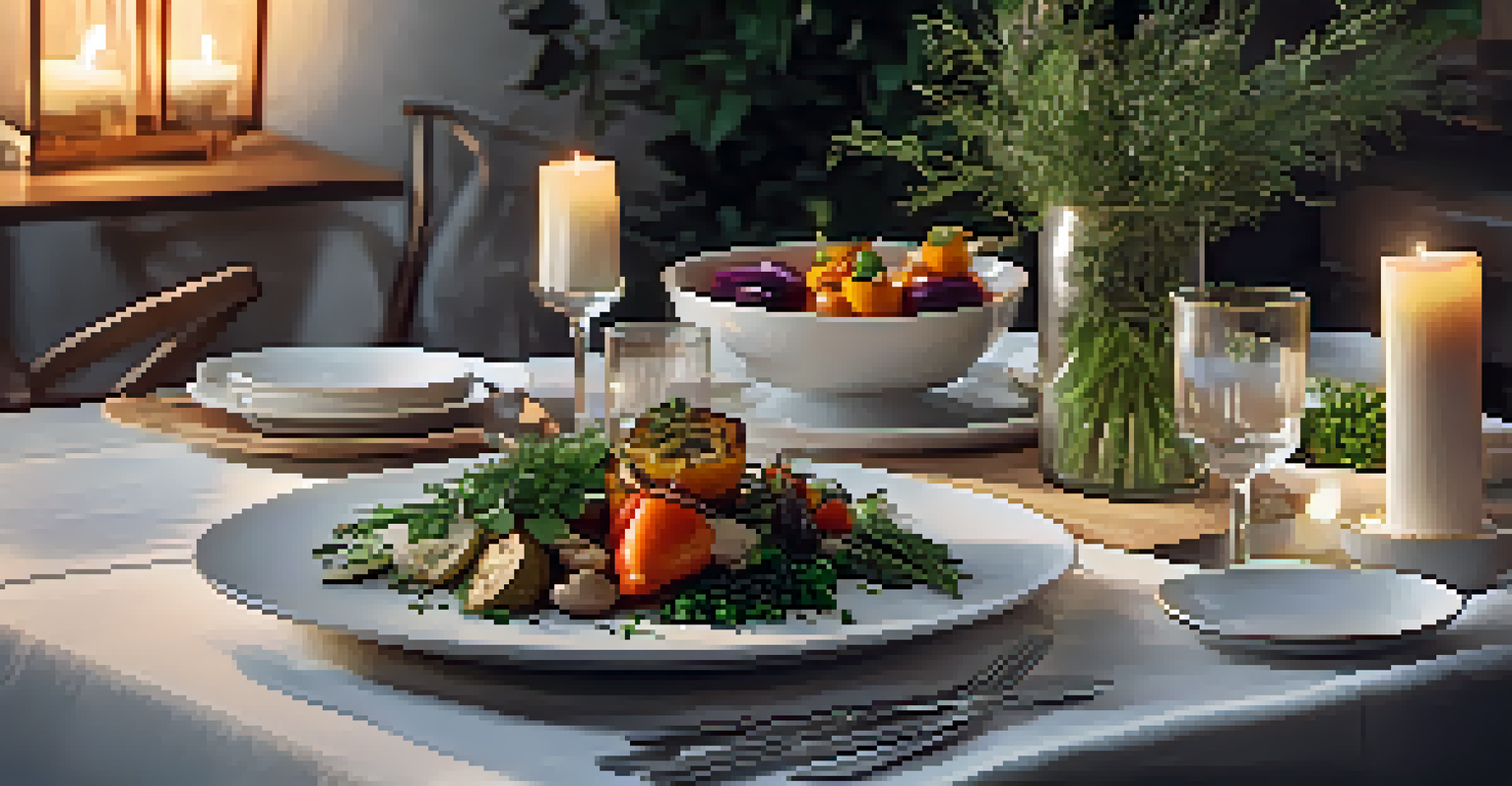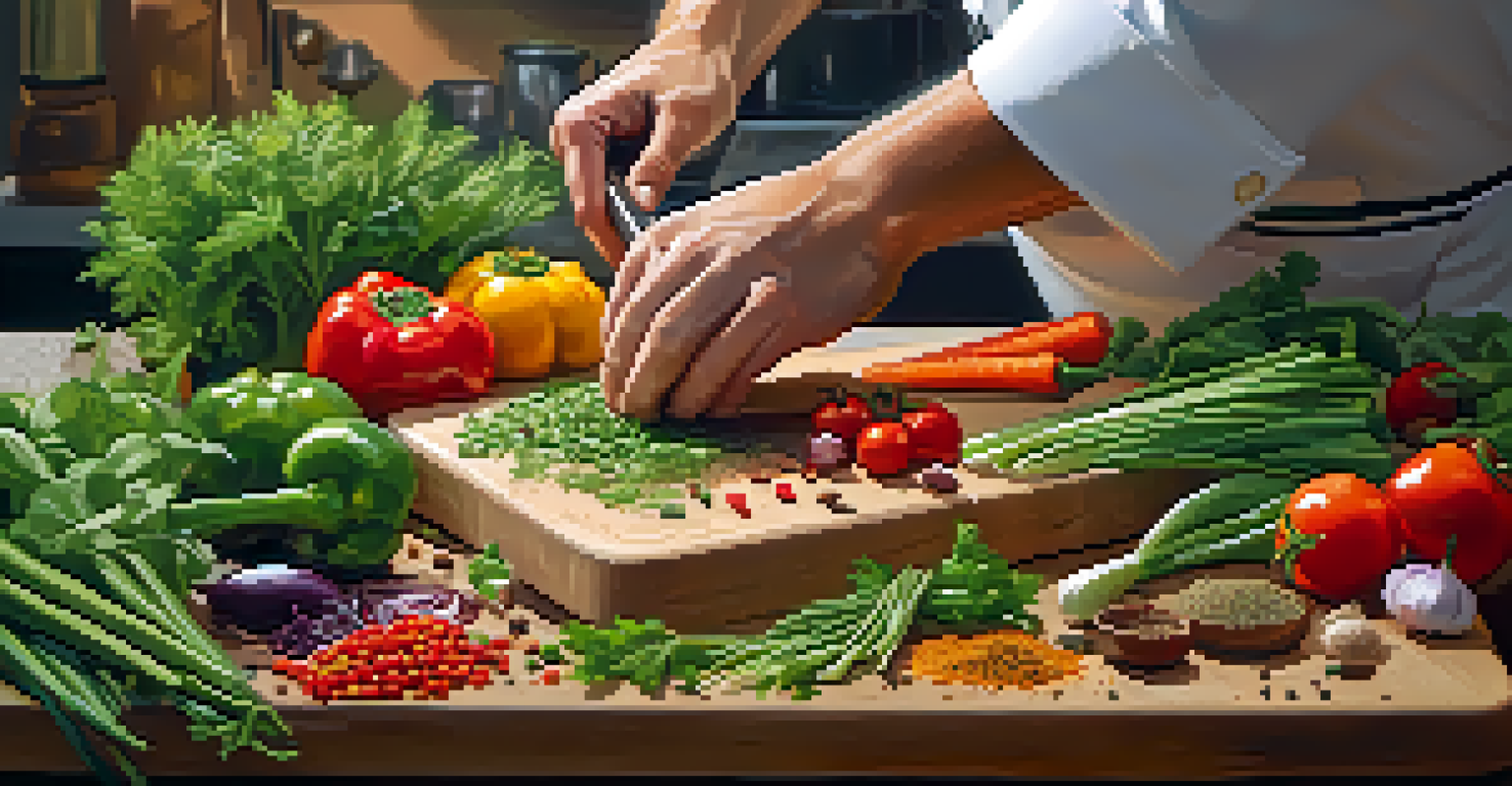Essential Cooking Skills for Flavorful Vegetarian Recipes

Understanding Flavor Profiles: The Heart of Cooking
To create flavorful vegetarian dishes, it's crucial to understand flavor profiles. Different ingredients bring unique tastes and aromas, so knowing how to balance them can elevate your meals. For example, combining sweet vegetables like carrots with tangy ingredients like balsamic vinegar can create a delightful contrast.
The only real stumbling block is fear of failure. In cooking, you’ve got to have a what-the-hell attitude.
Using herbs and spices effectively is key to enhancing these flavors. Fresh herbs like basil or cilantro can brighten up a dish, while spices like cumin or paprika can bring warmth. Experimenting with these can help you discover your preferred combinations.
Finally, don't forget about umami—the savory taste that can be achieved with ingredients like mushrooms or tomatoes. Incorporating these elements ensures your vegetarian recipes are not just nutritious but also bursting with flavor.
Knife Skills: The Foundation of Efficient Cooking
Good knife skills are essential in any kitchen, especially when preparing vegetables. Learning how to chop, slice, and dice efficiently will save you time and effort. A well-sharpened knife makes cutting easier and safer, allowing you to work with precision.

Practice basic cuts like julienne and brunoise to improve your technique. For instance, julienning zucchini can create lovely strands for a healthy pasta alternative. As you become more comfortable, you’ll find that uniform pieces cook more evenly, enhancing both presentation and flavor.
Understanding Flavor Profiles
Balancing different ingredients and incorporating herbs, spices, and umami can elevate vegetarian dishes.
Remember, it's not just about speed; it's about control. The more proficient you become with your knife, the more creative you can be with your recipes, allowing you to experiment with different textures and shapes.
Cooking Techniques: Mastering Heat for Flavor
Understanding basic cooking techniques is vital for flavor development. Techniques like sautéing, roasting, and steaming each bring out different qualities in vegetables. For example, roasting vegetables caramelizes their natural sugars, resulting in a rich, sweet flavor.
Cooking is like love. It should be entered into with abandon or not at all.
Sautéing on high heat can enhance the taste and texture of your ingredients while preserving their nutrients. Using a hot pan allows vegetables to cook quickly, maintaining their vibrant colors and crunch. This technique is perfect for a quick stir-fry or a refreshing salad.
Don't hesitate to experiment with different methods. By combining techniques, such as simmering and then broiling, you can add depth to your vegetarian dishes, making them more complex and satisfying.
The Art of Seasoning: Bringing Dishes to Life
Seasoning is an art that can transform a good dish into a great one. Salt is often the first step, as it enhances natural flavors. However, knowing when and how much to use can be tricky; it's best to season in layers throughout the cooking process.
In addition to salt, consider using acids like lemon juice or vinegar to brighten flavors. A splash of acidity can cut through richness and balance a dish, making the flavors pop. For example, a dash of lemon juice just before serving can elevate a simple vegetable stew.
Mastering Knife Skills
Efficient knife skills not only save time but also enhance creativity and presentation in cooking.
Finally, don’t overlook the power of finishing touches. A sprinkle of fresh herbs or a drizzle of high-quality olive oil can add a final layer of flavor that makes your dishes unforgettable.
Ingredient Substitutions: Flexibility in the Kitchen
Being flexible with ingredients can open up a world of possibilities in vegetarian cooking. If a recipe calls for a specific vegetable, consider what you have on hand. For example, if a dish requires spinach but you only have kale, don’t hesitate to substitute; just adjust cooking times accordingly.
Understanding flavor compatibility is essential for successful substitutions. If a recipe calls for bell peppers, think about how other vegetables like zucchini or eggplant could work. This approach not only saves time but also encourages creativity in your cooking.
Experimenting with substitutes can lead to delightful surprises. You might discover a new favorite combination that you wouldn't have tried otherwise, all while minimizing food waste and maximizing your pantry's potential.
Meal Prep: Streamlining Your Cooking Process
Meal prep is a game-changer for busy cooks. By dedicating a few hours to prepare ingredients in advance, you can make weeknight cooking a breeze. Chopping vegetables, cooking grains, or even batch-cooking sauces can save you precious time during the week.
Storing prepped ingredients in clear containers helps you see what you have at a glance, making it easier to whip up meals. For instance, having roasted chickpeas on hand can quickly add protein to a salad or grain bowl.
Meal Prep for Efficiency
Dedicating time to meal prep streamlines weeknight cooking and encourages healthier eating habits.
Plus, meal prepping encourages you to be intentional about your meals, helping you stick to a vegetarian diet. With everything ready to go, you’ll be more likely to choose nutritious options over less healthy fast food alternatives.
Plating and Presentation: Elevating Your Dishes
The way you present your food can enhance the dining experience significantly. Taking the time to plate your dishes thoughtfully can make even a simple salad feel like a gourmet meal. Use contrasting colors and textures to create visual interest on the plate.
Consider the arrangement of ingredients; for example, stacking grilled vegetables or using a ring mold for grains can add sophistication. A sprinkle of fresh herbs or a drizzle of sauce can serve as a beautiful finishing touch.

Finally, remember that first impressions matter. A well-presented dish not only looks appealing but also invites your guests to savor each bite, making your vegetarian cooking shine even brighter.